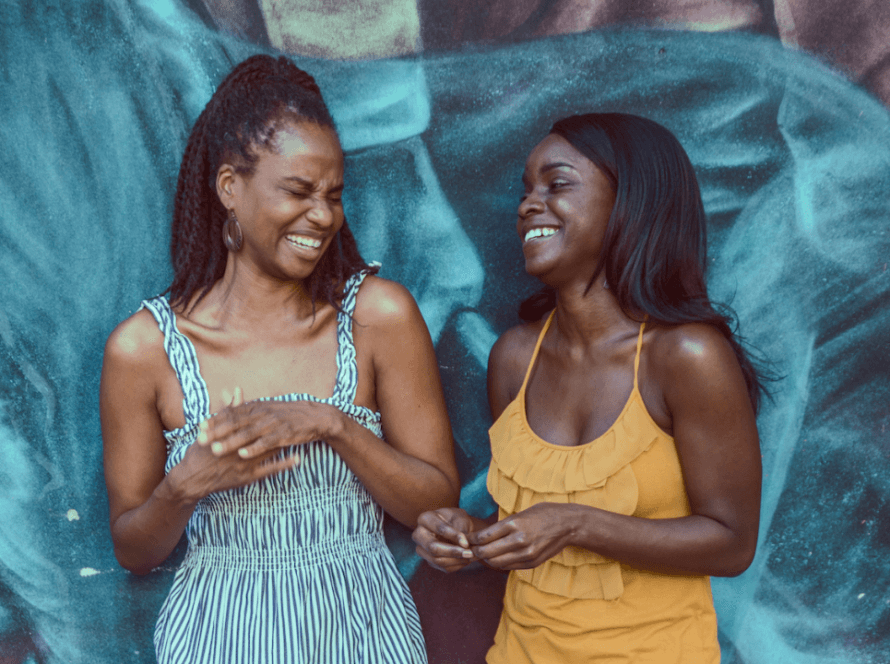Representation matters. That means representation in marketing matters.
A while back I was scrolling through Instagram and came across a post from an influencer that I follow. It was an ad she was doing for this line of comfortable travel clothes. I was in a shopping mood, so I took my credit card out and clicked through to the account of the brand mentioned in the post.
I quickly put my credit card away.
None of the people in the feed of that account looked like me. Not even close. I know this, because I scrolled through THE ENTIRE account, looking for someone.
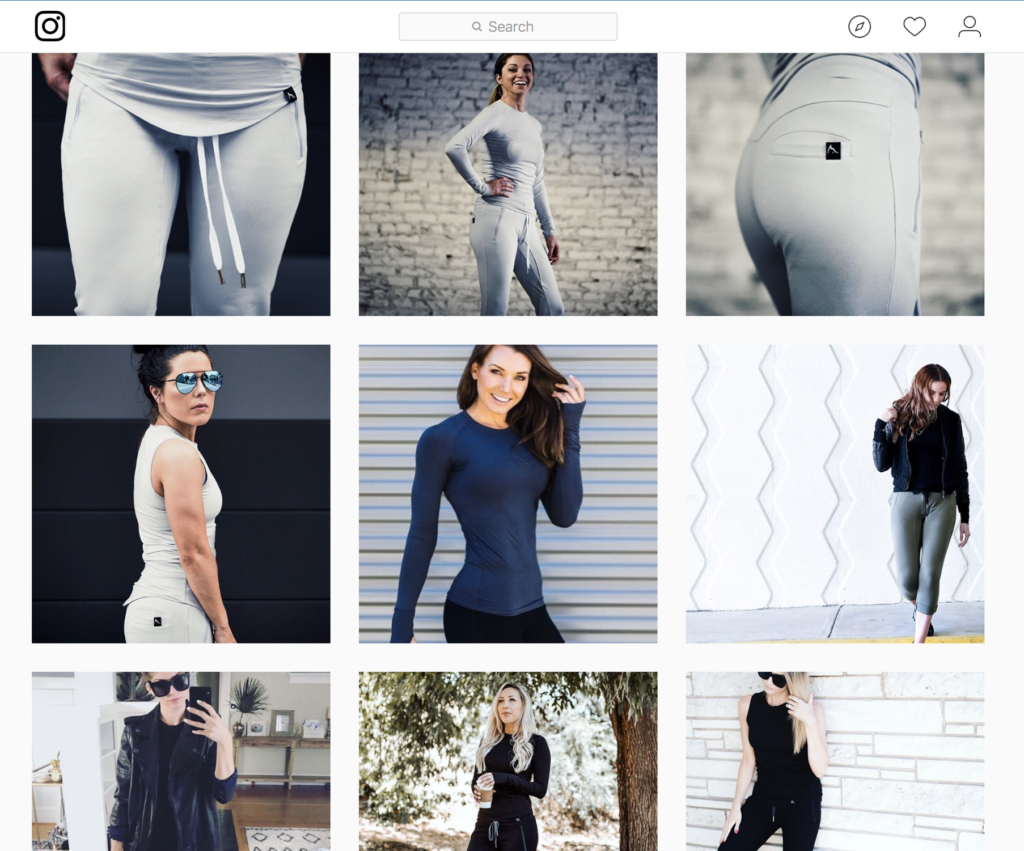
My feelings were hurt, as I got the message loud and clear from the brand “this isn’t for you.”
This brand’s marketing worked. I saw the ad, and clicked through to the brand’s account with the intention to buy. But the lack of representation stop me in my tracks, rendering their marketing efforts null and void.
This wasn’t an isolated incident.
Very often, as I see brands posting photos of their teams — and don’t see anyone who looks like me, it kind of feels like a little punch in the gut. In every instance, the signal these non-representative images send are “you don’t belong here.”
That’s a shame because business is about belonging.
And when I don’t see myself represented in the visual imagery a brand puts forth, I don’t buy from them.
I’m definitely not the only one.
Your customers need to see themselves or who they aspire to be reflected in the visual imagery your brand puts forth in order to take the next step forward with you.
But not all representation is created equal.
That was the hypothesis I started with when I set out to find out what’s really important to consumers when it comes to representation. That way you can use real data to inform your inclusive marketing efforts, particularly on the representation front.
This inaugural representation in marketing research study was conducted via a survey, using SUZY’s Crowdtap Audience. In total, 1101 people between the ages of 13 – 73, and from a broad cross-section of genders, ethnicities, and income levels responded.
Here’s what they want you to know.
Representation in marketing matters now more than ever, and to some groups more than others
Three out of four, or 74 percent of consumers say representation in marketing is important to them for the brands they engage and buy from.
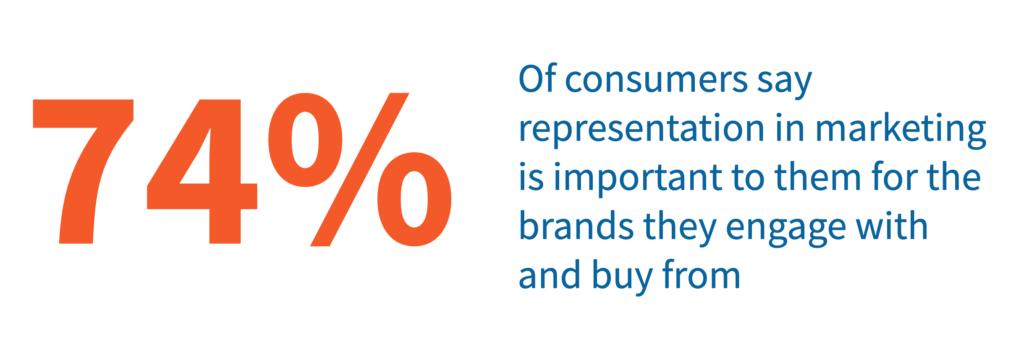
After digging deeper into the data to see how it differed based upon various demographics, that number rose to 84 and 88 percent for Black and LatinX consumers respectively.
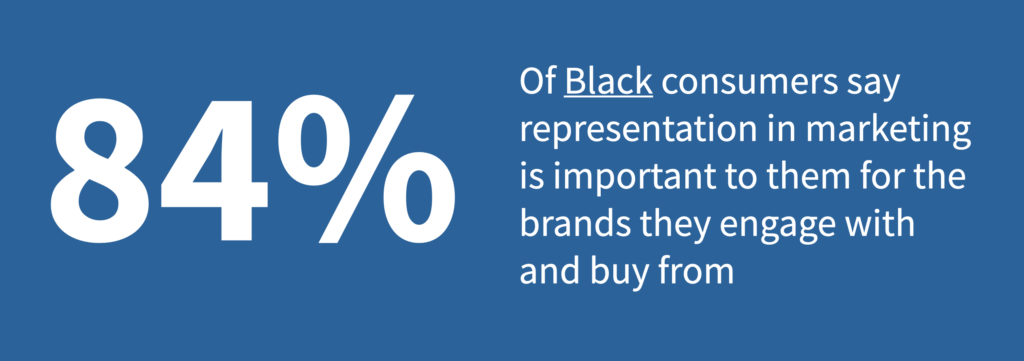
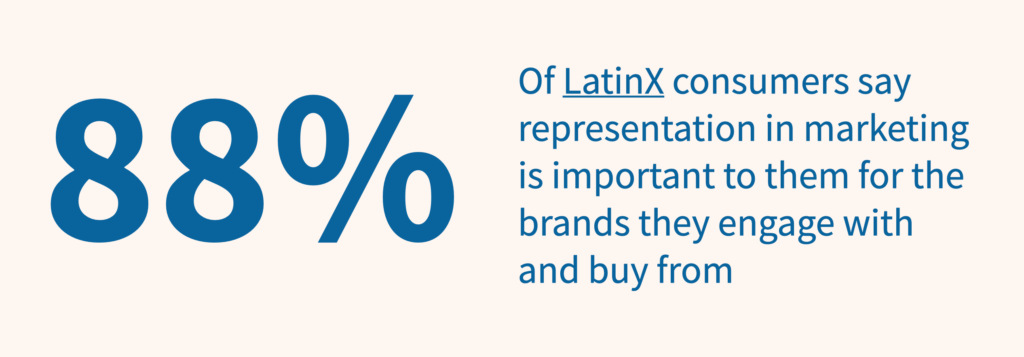
Representation in marketing was also important for people at higher incomes. That’s the case for 77 percent of consumers making between $100,000 and $149,999 per year. That percentage rose to 84 percent for those earning $150,000 or more annually.
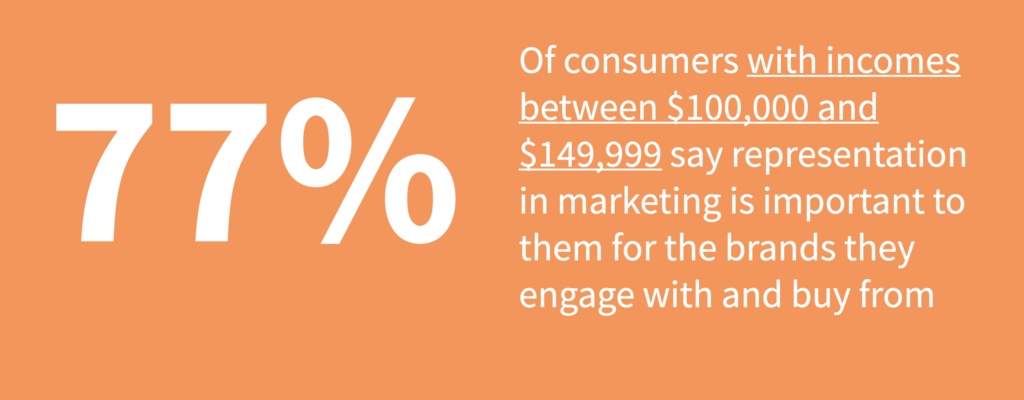
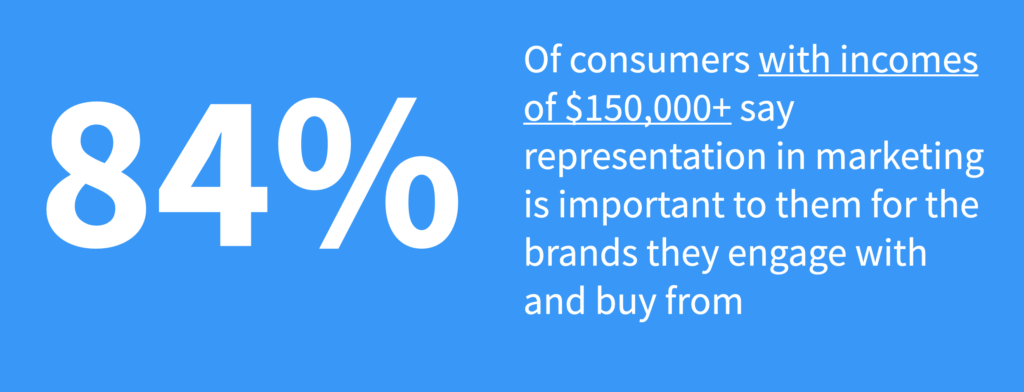
Verbatims from the open-ended section of the survey where I asked consumers “What do you wish more brands knew about representation?” underscored the power of representation on a broad scale.
“How much it can effect someone and their feelings about themselves when they never see themselves represented. Like they are not important.“
“The damage they do by underrepresentation.”
“Brands must be aware of the power and impact of featuring members of underrepresented groups in their marketing.”
“Brands can represent different types of people, and each one of them will feel good being represented, it is a win-win.”
“Representation doesn’t hurt anyone. It only helps.”
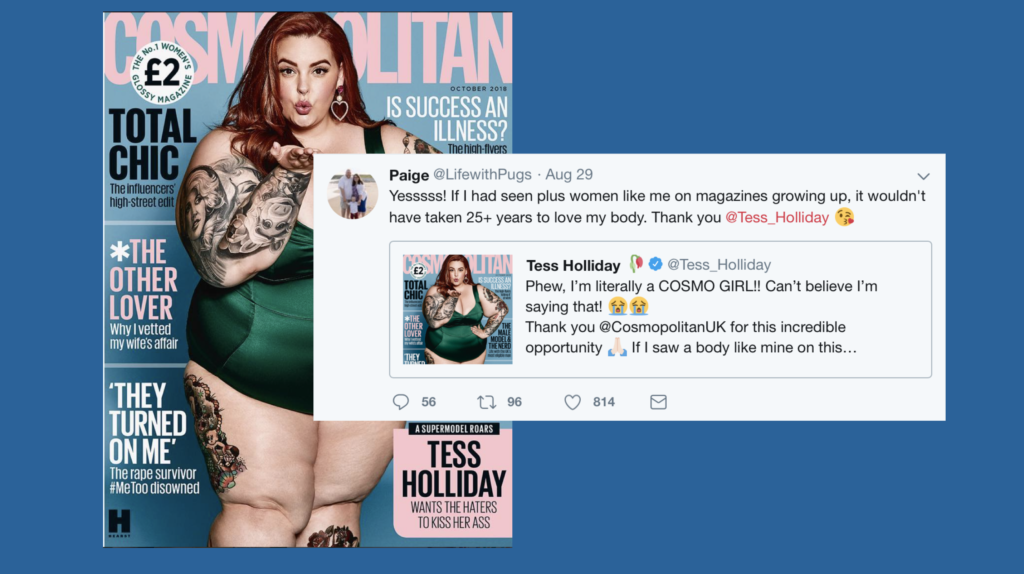
Consumers buy and engage more with a brand when they see themselves represented
Two out of three, or 67 percent of consumers, say that seeing themselves represented impacts whether or not they buy from or engage with a brand. Those numbers increased slightly based upon race and ethnicity and income.
- 85 percent for Black consumers
- 74 percent for LatinX consumers
- 74 percent for consumers with annual incomes between $75,000 and $99,999
- 73 percent for consumers with annual incomes between $100,000 and $149,999
- 75 percent for consumers with annual incomes above $150,000

Here are a few additional insights that help support the data.
“Let them know that all of us, regardless of age, skin color, religion and sexual orientation, among others, deserve to be included in the marketplace as we are all equal as humans and seeing ourselves represented in brands makes us interested in them.“
“I wish brands understood the more they make a brand inclusive to certain people or races the more they feel a connection to the brand and are intrigued in pursuing it. They can always find any kind of brand that has cheaper costs, but when you personalize the brand and make it relate to a person it becomes priceless.“
Half of consumers say they still buy from or engage with a brand even when they don’t see themselves represented.
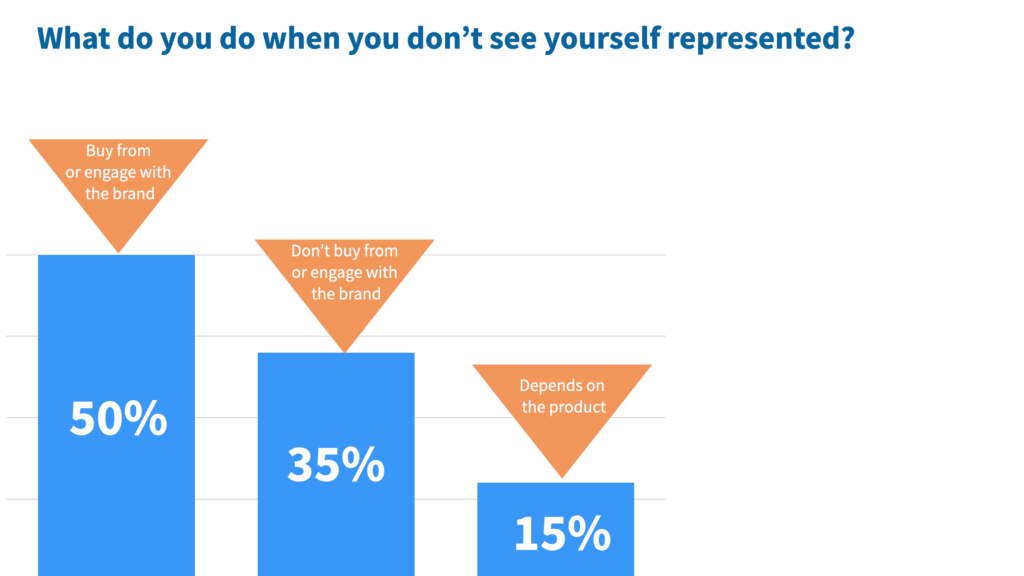
That number increased significantly to three out of four consumers buying from or engaging with a brand simply because they saw themselves represented.
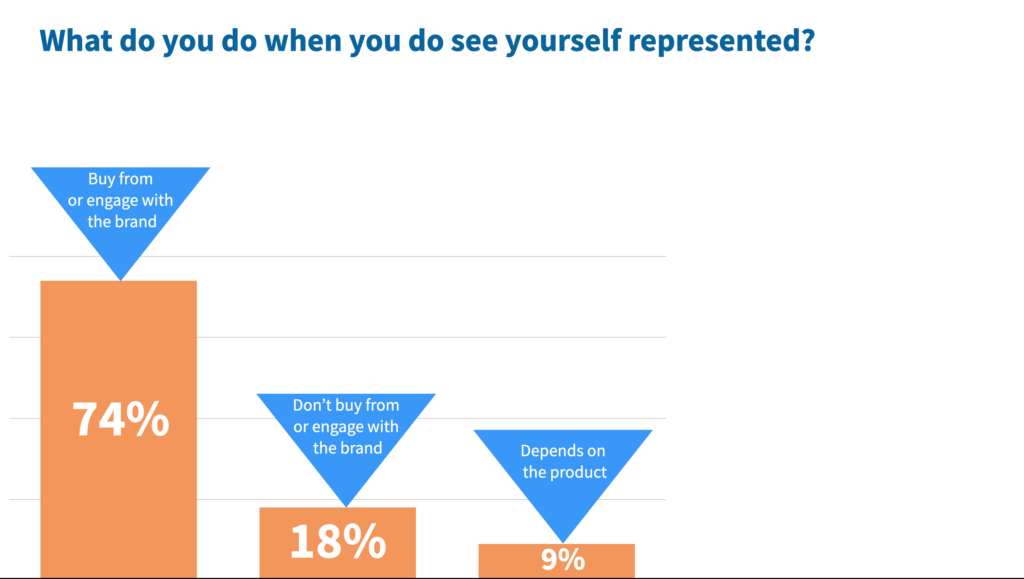
Here’s an insight from one consumer that helps to explain why so many people continue to buy from and engage with brands, even when they don’t see themselves in the visual imagery they put forth.
“Representation is important and I think there has been some improvement since I was a kid. As a kid, I was used to not seeing myself represented, so I don’t even notice when I’m unrepresented. However, it’s powerful when I do actually see myself represented. I wish companies would continue to make an effort to show a range of representation so that kids can grow up seeing themselves represented so that they feel seen and acknowledged.“
Some types of representation in marketing are more important than others
There are a number of dimensions for which people have differences that are important for them to see themselves from a representation standpoint.
For this part of the survey participants were asked to select which areas of representation were most important for them.
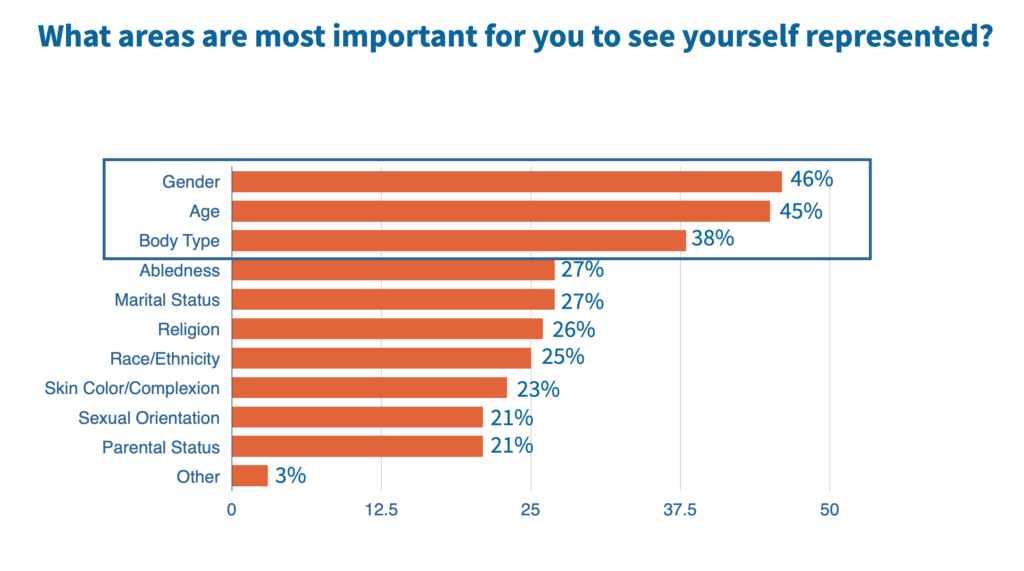
Gender, age, and body type were the dimensions of representation that were most important for consumers.
In the verbatims, consumers expressed their frustrations, particularly around what they feel is a lack of representation from a body type standpoint.
“bigger people, people with disabilities, and people who aren’t just cookie-cutter young white people are also worthy of being represented”
“I want them to know representation is important. I am only 5ft tall and am often excluded in clothing brands because they don’t show petite models that are average sized women. Petite models are often size 2, show us someone who is curvy and petite. It matters. If I dont have options or im not represented I tend to not look at that brand again.”
“that skin color and body type are important. As a size 12, I know that some brands do not design clothing for my body, but simply add inches to the pattern. Seeing someone my size in clothing influences my willingness to buy the clothing.”
When I took a deeper look at the data from a demographic standpoint, the priorities from a representation standpoint were different by group.
Age representation has a significant degree of importance for consumers aged 50 and up. Here are their top three areas of importance for the 50-64 and 65 and up age groups.
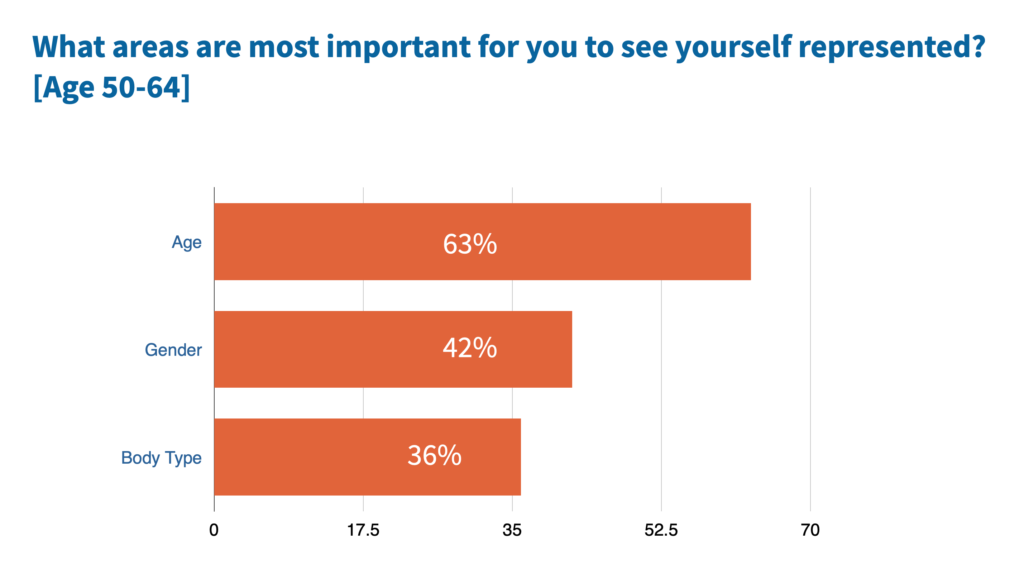
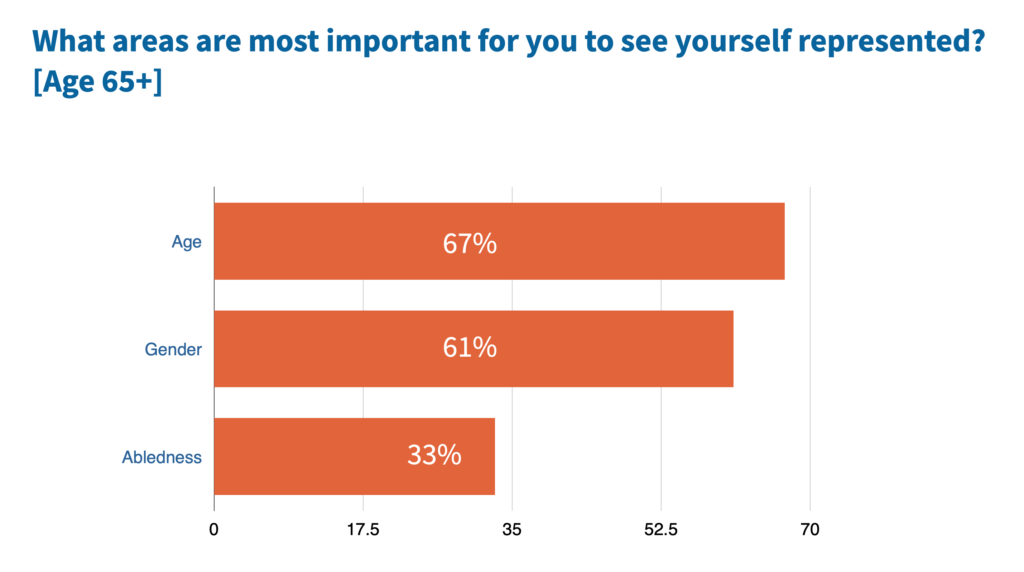
The 50 and up age group also had some very strong thoughts about how they want to be portrayed, and their overall experiences with how they feel brands treat them.
“I’m a single older man, not married, no kids, love my pets, with disposable income but I’m rarely marketed to..“
“We older folks would like to be honestly portrayed. We’re not all endurance athletes and we’re not all bedridden.”
“As an older woman I often feel like I’m not important when I see ads or social content about products and services. Most of them are geared toward younger women and don’t appeal to me. I would just like to see more “real” women in ads as opposed to skinny young models that don’t look like any woman I know. It turns me off and makes me feel like they don’t value my money or input.”
“Not every woman my age has children. Or looks like her grandmother. Women at 55 are not matronly and should be taken seriously, not condescended”
“that not all products are for young skinny girls and it would be nice if they showed women aging gracefully and that we are not all obsessed with makeup.”
Ongoing cultural intelligence enables brands to go beyond the superficial to address nuances that make people feel seen.
When it came to noting which areas of representation in marketing were important to them, there were clear differences in what consumers from traditionally underrepresented groups noted was important to them.
Some of those differences, like colorism, may not be immediately obvious or fully understood by marketers who aren’t part of these groups and who don’t have a deep degree of customer intimacy with them.
That’s why cultural intelligence is critical, to ensure your efforts to do representation right is received by the people you are serving.
The areas that are most important for Black consumers from a representation standpoint are race/ethnicity, skin color/complexion, and body type.
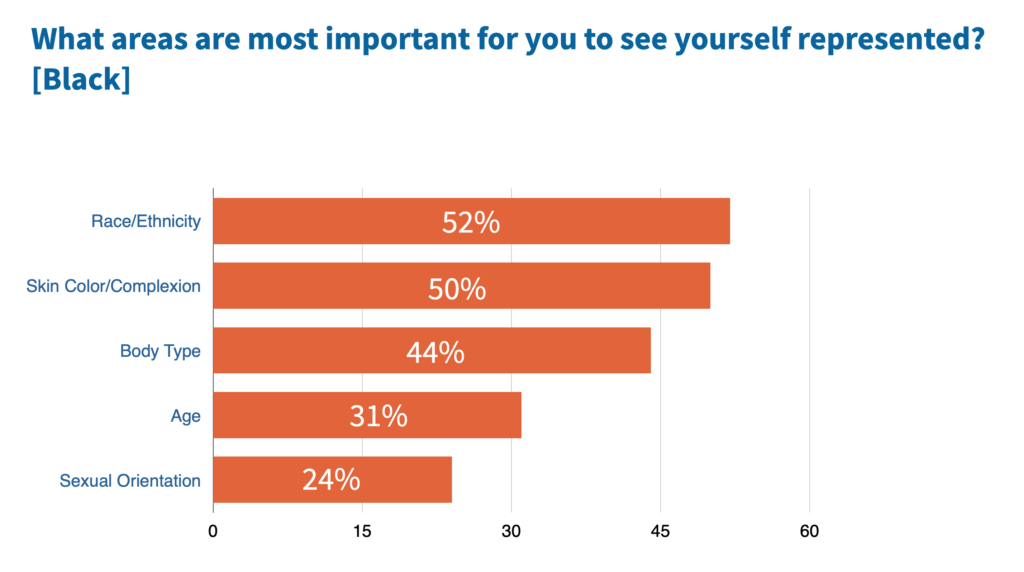
LatinX consumers note that gender, race/ethnicity, and body type are most important to them. It is also important to note that skin color / complexion bubbled up close to the top of their list as well.
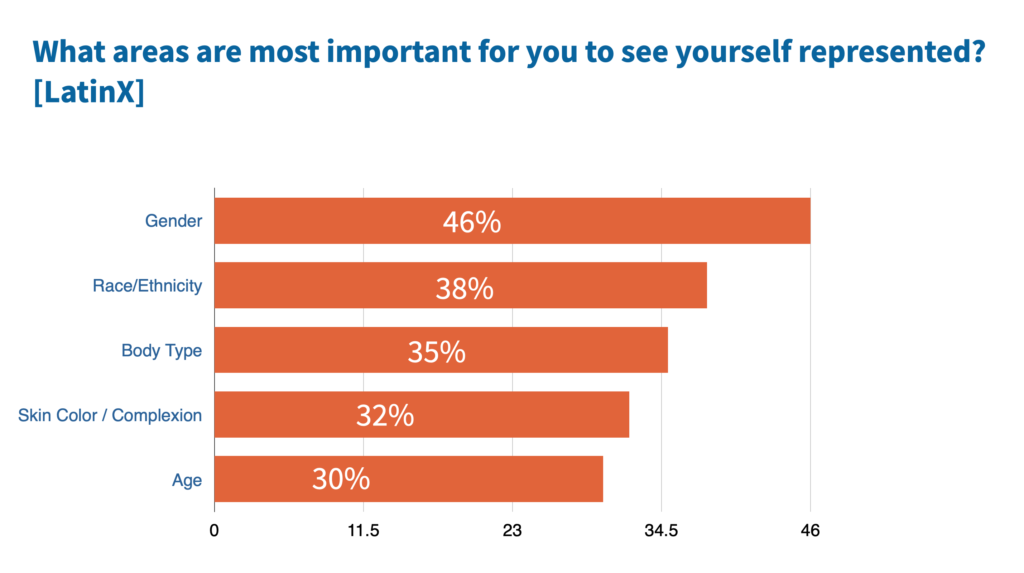
And nearly eight out of ten Asian consumers say that race / ethnicity are important areas for them to see themselves represented. Age and body type round out their top three. And similar to the LatinX community, one in three Asians say that representation from skin color / complexion standpoint is important to them as well.
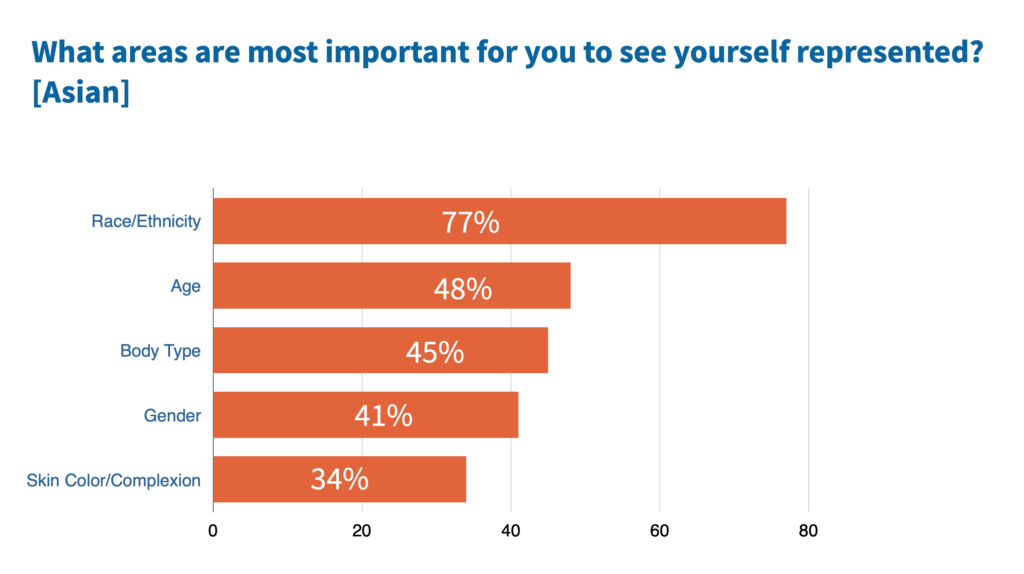
The verbatims highlight a very clear and compelling story about why skin color / complexion should not be ignored when it comes to making sure you are delivering meaningful representation, particularly for these groups.
“I wish brands know that Black people come in all shapes, sizes, hair textures and skin tones. It always seems its 2 skin tones for Black people in ads and brands which is very fair skin or very dark skin. This needs to be more reflective of REAL Black People skin tones.”
“I wish they realized how bad it hurts that no one knows how to do African American women’s hair on television or images I see online while these actors are on set. We always get left with dry hair that is never done. I also never see black girls that look like KEKE Palmer or Aaliyah on television, it is always biracial girls.”
“I wish they were more inclusive and knew that only including light-skinned people of color is harmful”
“That every race has different types of skin colors, features, etc. for example, the majority of brands only put in light skin people in their ads even if they’re Black”
“I wish brands knew more that brown people exist and we want to be represented and not every brown person looks like Priyanka, we all come from different skin tones as well.”
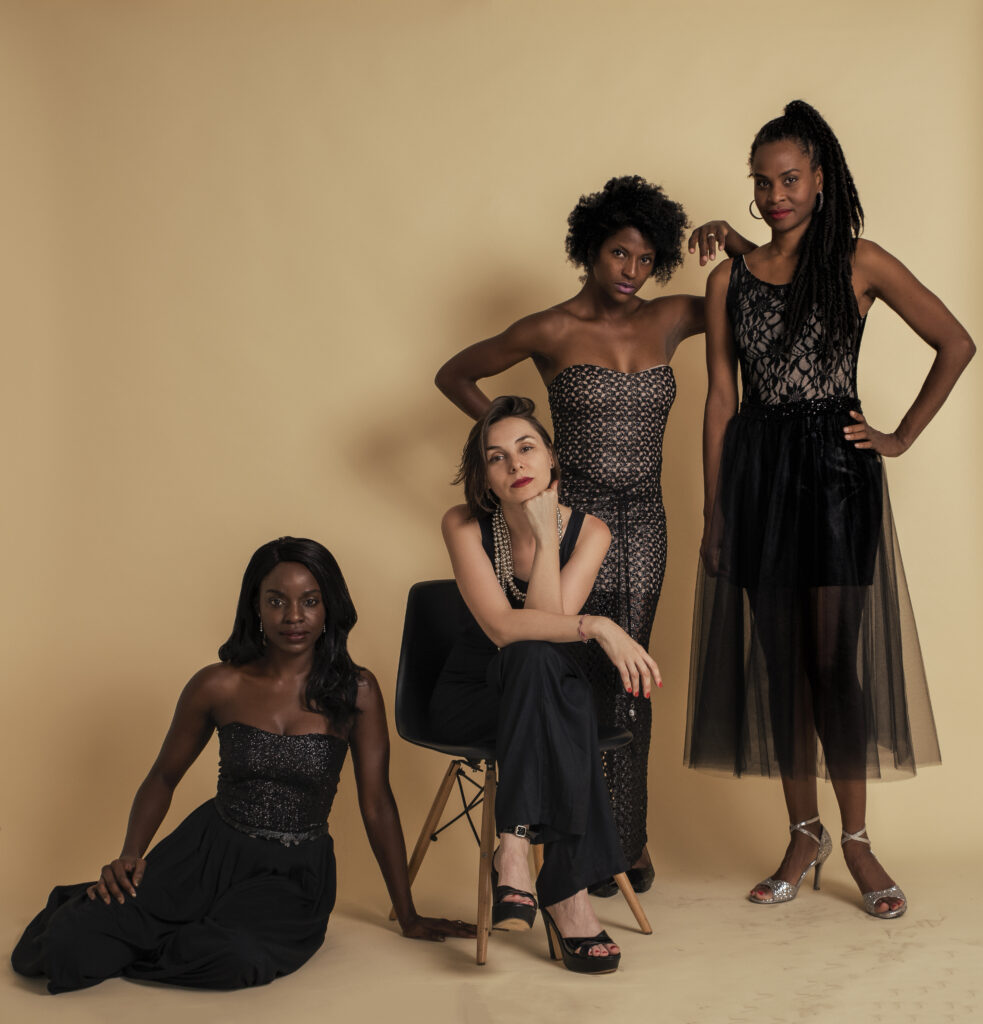
Consumers aged 13-17 also said that race / ethnicity was important to them from a representation standpoint.
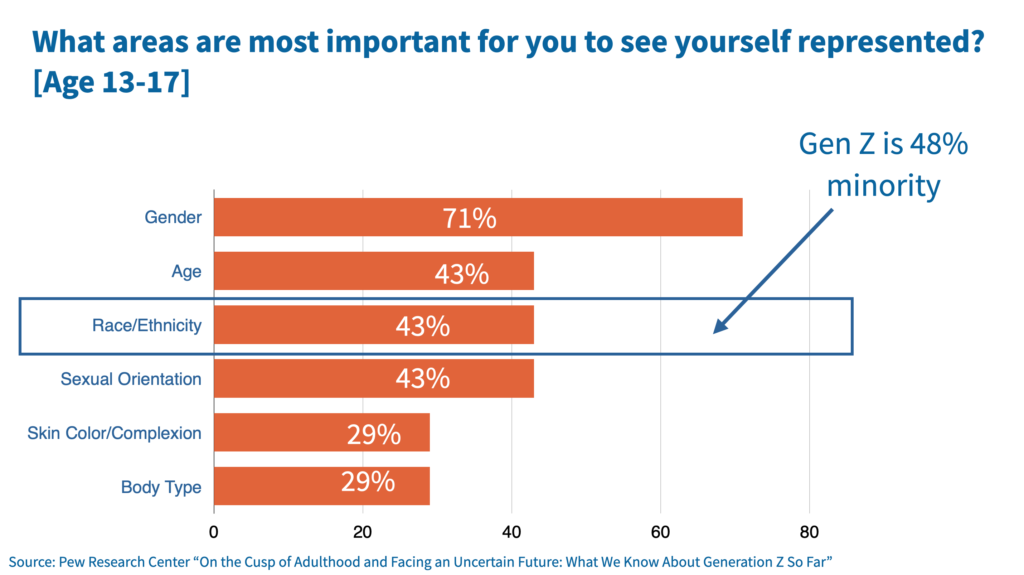
Race/ethnicity and skin color/complexion also bubbled up as high-importance for a good segment of those from 18-24-year-olds.
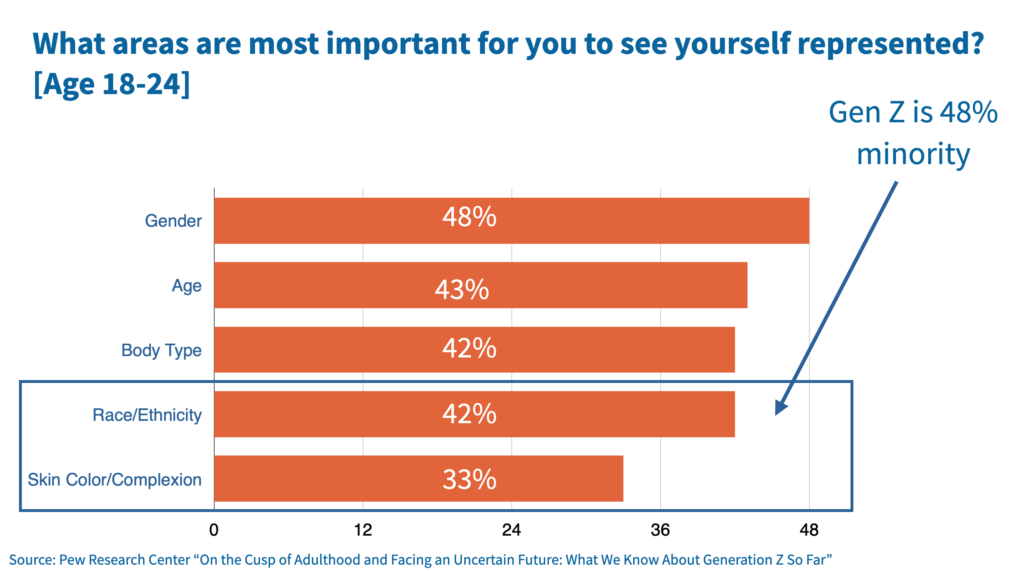
Those who fall in the age range of 13 – 24 are part of Gen Z. When you connect the dots that Gen Z is 48 percent diverse, it becomes clearer why race/ethnicity and skin color/complexion rate so high for them.
Format matters when it comes to producing authentically representative content
Consumers were also clear that not every format has the same level of impact on them when it comes to representation. Their responses showed that photography, testimonials, and featured content and story lines are most important to them.
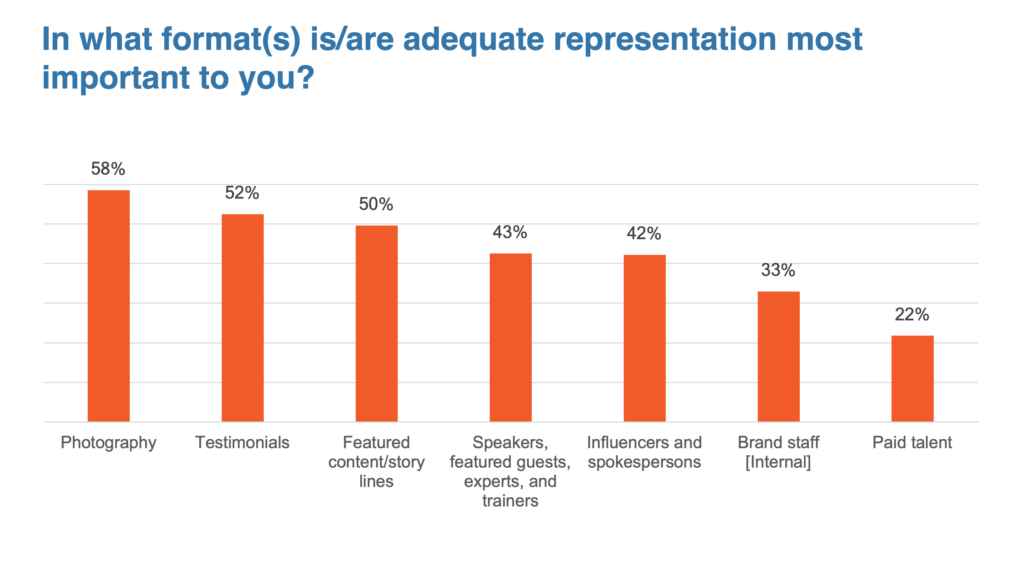
Their commentary provided a bit more insight as to why format matters to them.
“It’s not just enough to have an image of a group you are trying to draw in. A model in a wheelchair in 1 shot interacting with others tells me you know some people use wheelchairs but I rarely see such a person as the main character in an ad. The same for gay couples. When I see an ad with a gay person/couple as the main character, I pay attention and look at buying or supporting that brand. But an ad that just shows a gay couple in the background or in a quick cut does not cut it as a buy me!”
“I wish brands knew how good it felt to really connect with a piece of media. Seeing someone I can relate to really increases my enjoyment of the product.”
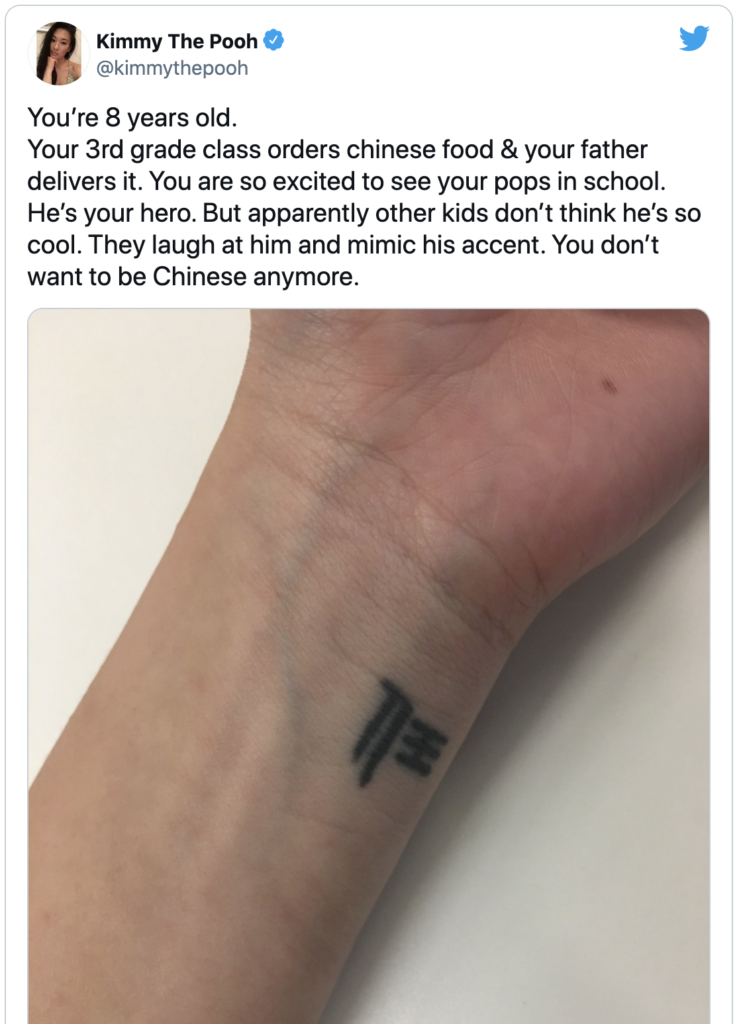
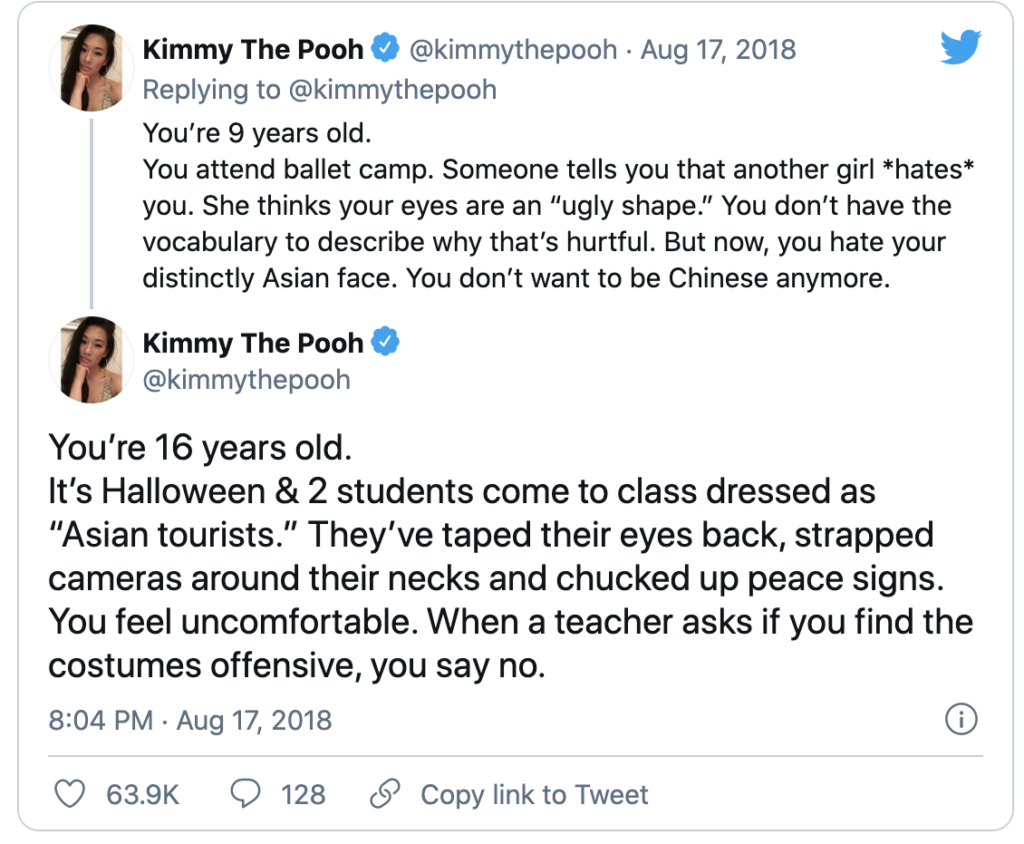
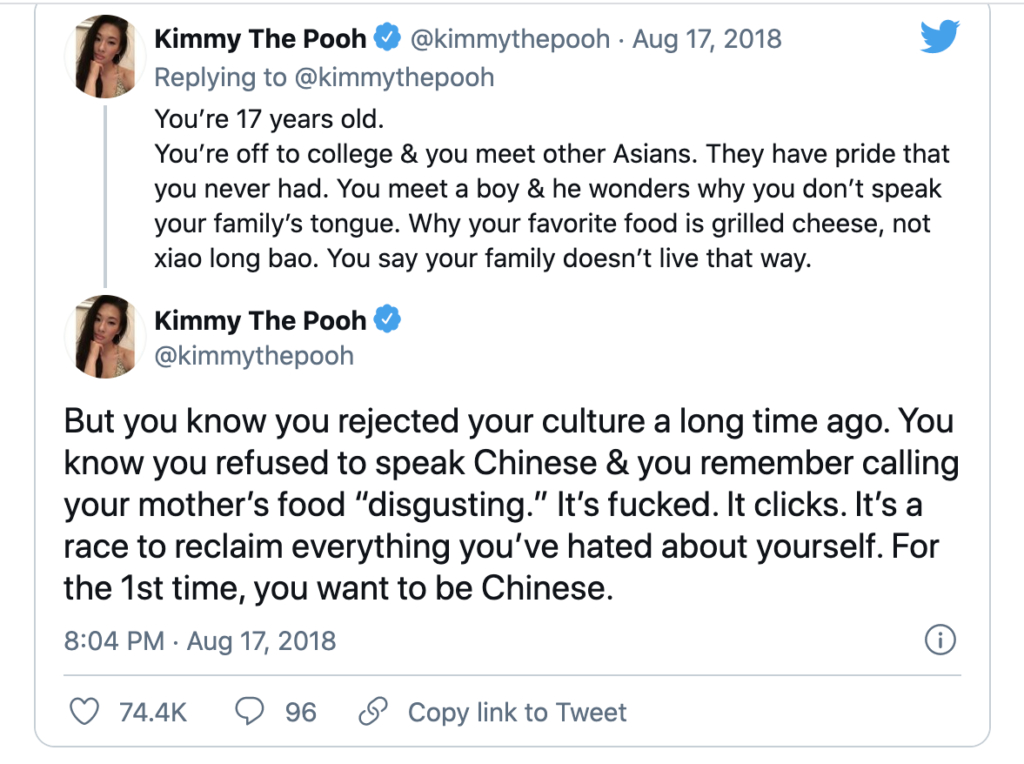
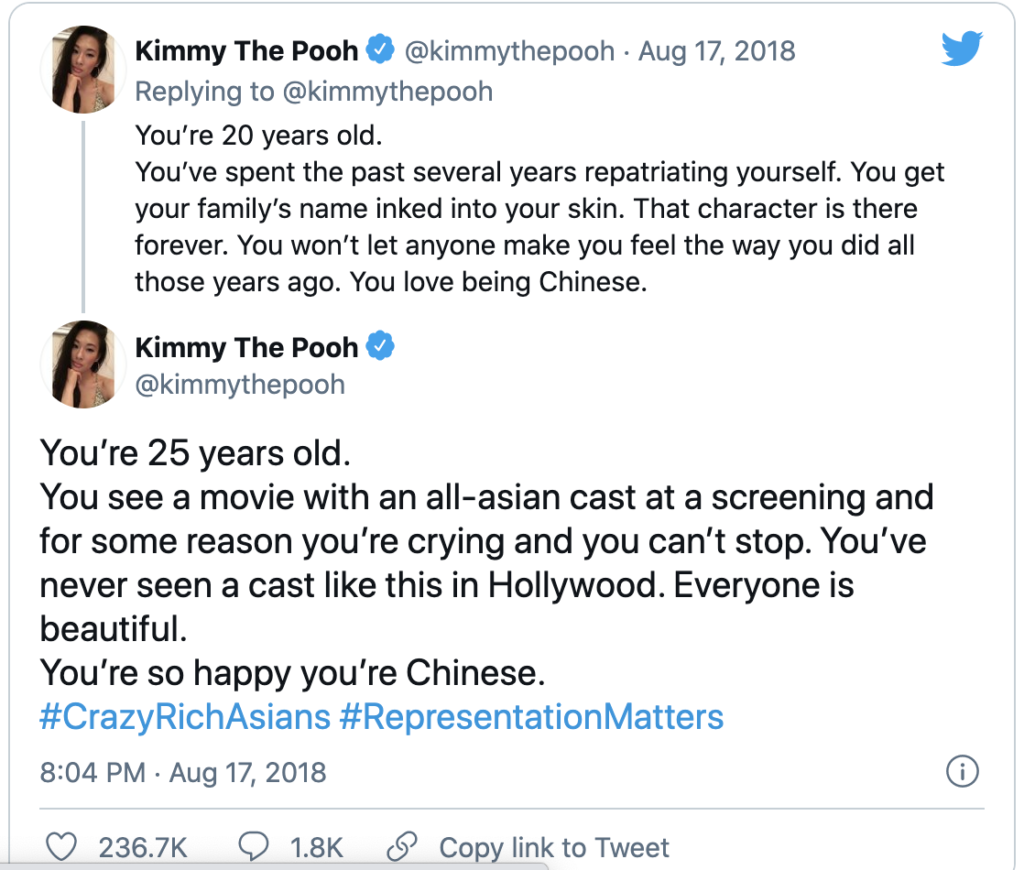
Consumers believe brands are inclusive when it permeates through every part of what they do, rather than just in marketing promotions
This sentiment popped up over and over again when I asked respondents what they wish more brands knew about representation in marketing.
“I wish brands can be more inclusive with every aspect of their businesses!”
“When you choose to represent different types of people that inclusivity needs to translate into other areas of the brand. The brand also needs to be outspoken politically, have fair hiring tactics, etc, or people will realize that their “representation” is just pandering for sales.”
“I wish more brands understood that a diverse representation cannot be achieved by only one channel: showing a mixed race couple or gay male couple in a tv ad is not enough. The brand should also incorporate the diversity into their hiring, their brand principles, as well as their public image.”
“it’s more than just putting someone on an ad. they need to create products that cater to different people, hire people that are diverse”
“I wish they included more types of people in both their campaigns and in their actual companies as Senior Leaders”
Authenticity and relatability rule the day when it comes to representation in marketing
Consumers are also clear that true and meaningful representation takes effort. Too many campaigns come off as forced and superficial, and that doesn’t have the positive impact of making consumers want to engage or buy.
“I want the representation to be more honest and real”
“Just slapping a label on a character, like making a character gay or bi because you want to, or just adding in a character of a different race is not enough. It has to be authentic and not just checking boxes.”
“That the users that generally spot superficial inclusiveness from a mile away”
“That there is an authentic way and an inauthentic way to have diverse representation. Brands needs to take time to learn the difference.”
“That it is important not to push stereotypes, but also not to look like the United Nations – it is fine to show communities that don’t represent everyone.”
Business is about belonging.
And when you are intentional about ensuring your customers see themselves and or who they aspire to be reflected in the visual imagery your brand puts forth, you will send the signals that lets them know that they do indeed belong with you.
Everyone wins when the customers you want to serve feel like they belong with you.
As you go about your daily work, remember this simple quote from a consumer, that sums up why committing to representation in marketiing is worth it:



